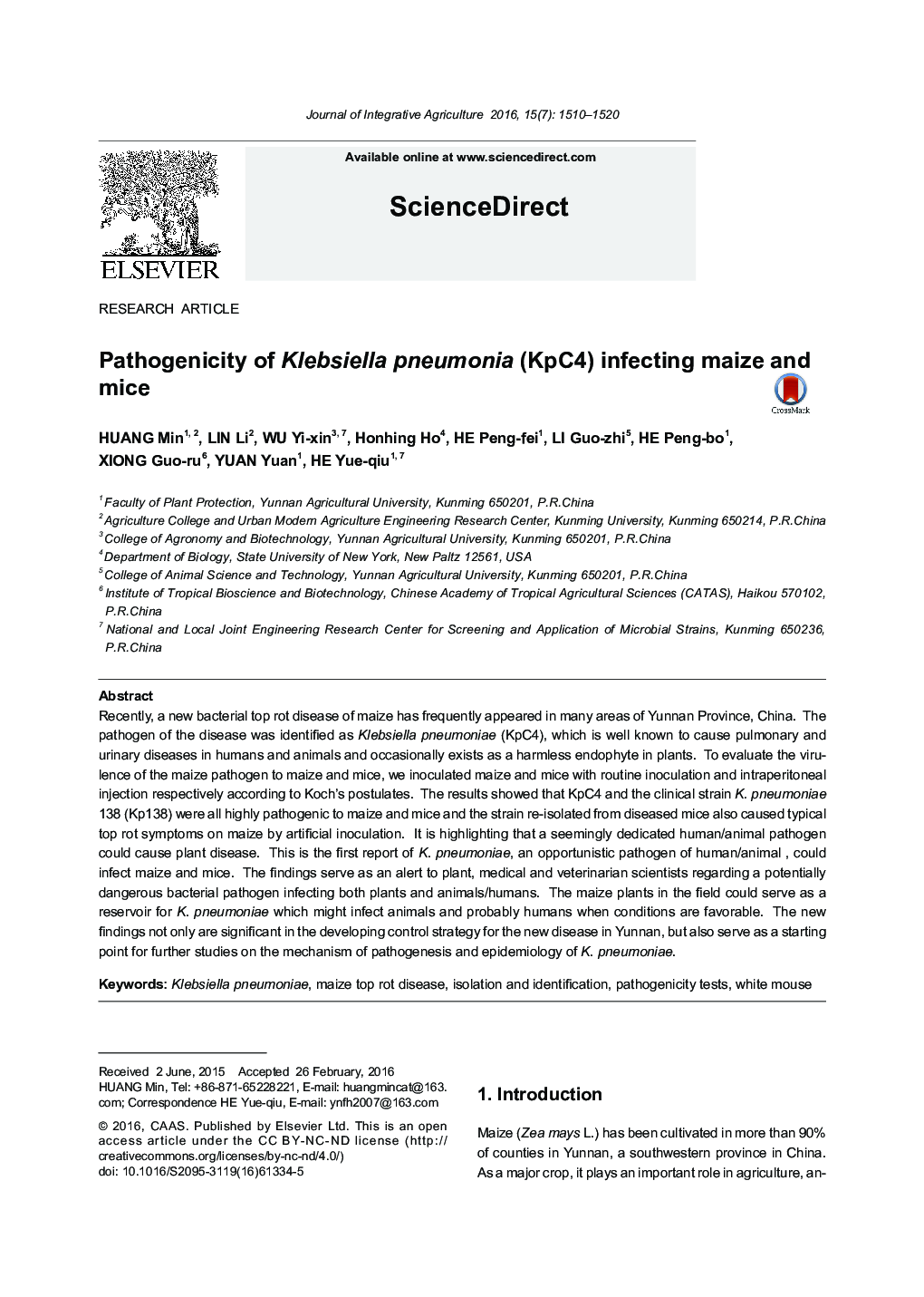| Article ID | Journal | Published Year | Pages | File Type |
|---|---|---|---|---|
| 10997790 | Journal of Integrative Agriculture | 2016 | 11 Pages |
Abstract
Recently, a new bacterial top rot disease of maize has frequently appeared in many areas of Yunnan Province, China. The pathogen of the disease was identified as Klebsiella pneumoniae (KpC4), which is well known to cause pulmonary and urinary diseases in humans and animals and occasionally exists as a harmless endophyte in plants. To evaluate the virulence of the maize pathogen to maize and mice, we inoculated maize and mice with routine inoculation and intraperitoneal injection respectively according to Koch's postulates. The results showed that KpC4 and the clinical strain K. pneumoniae 138 (Kp138) were all highly pathogenic to maize and mice and the strain re-isolated from diseased mice also caused typical top rot symptoms on maize by artificial inoculation. It is highlighting that a seemingly dedicated human/animal pathogen could cause plant disease. This is the first report of K. pneumoniae, an opportunistic pathogen of human/animal, could infect maize and mice. The findings serve as an alert to plant, medical and veterinarian scientists regarding a potentially dangerous bacterial pathogen infecting both plants and animals/humans. The maize plants in the field could serve as a reservoir for K. pneumoniae which might infect animals and probably humans when conditions are favorable. The new findings not only are significant in the developing control strategy for the new disease in Yunnan, but also serve as a starting point for further studies on the mechanism of pathogenesis and epidemiology of K. pneumoniae.
Related Topics
Life Sciences
Agricultural and Biological Sciences
Agricultural and Biological Sciences (General)
Authors
Min HUANG, Li LIN, Yi-xin WU, Ho Honhing, Peng-fei HE, Guo-zhi LI, Peng-bo HE, Guo-ru XIONG, Yuan YUAN, Yue-qiu HE,
